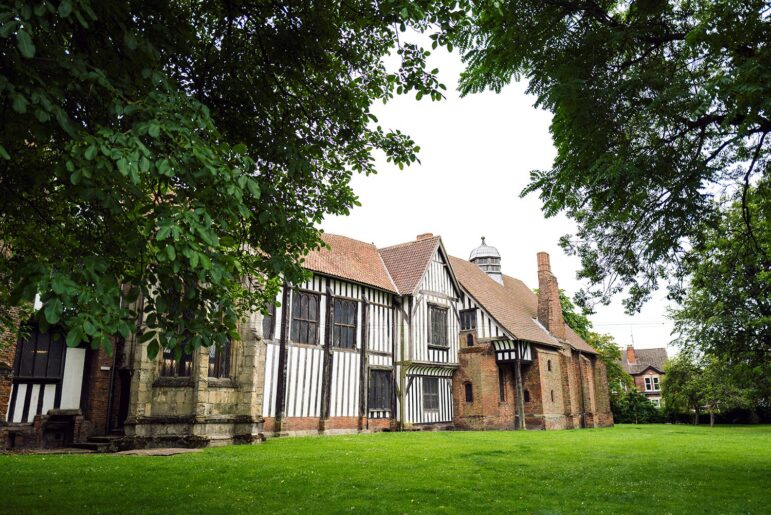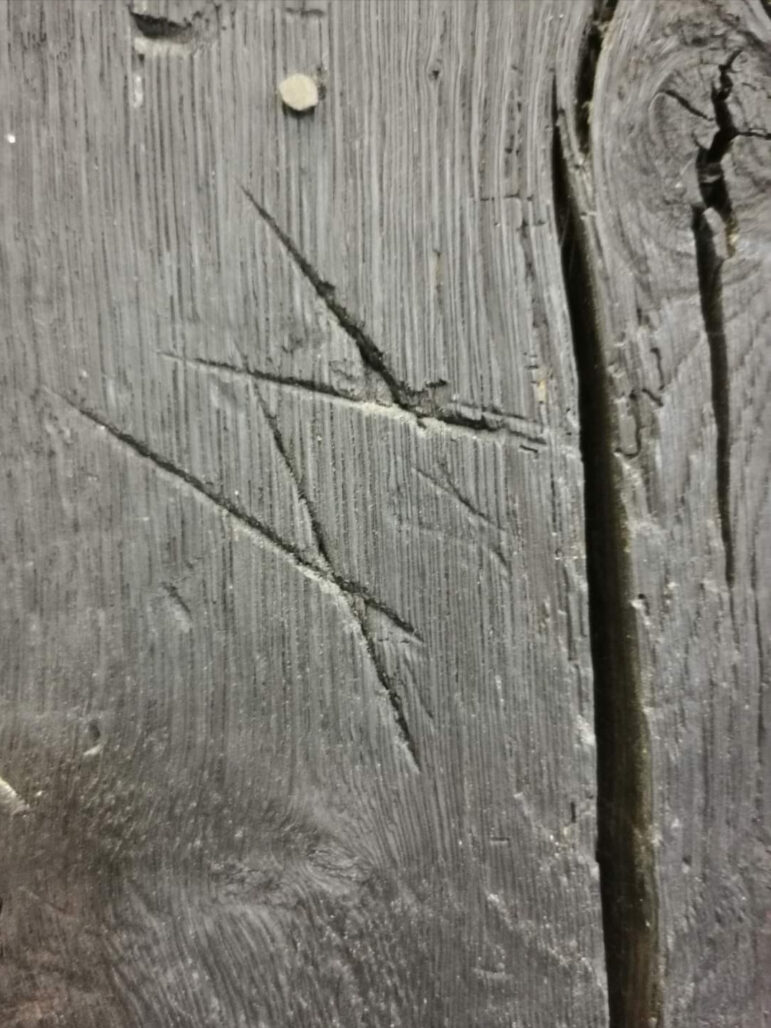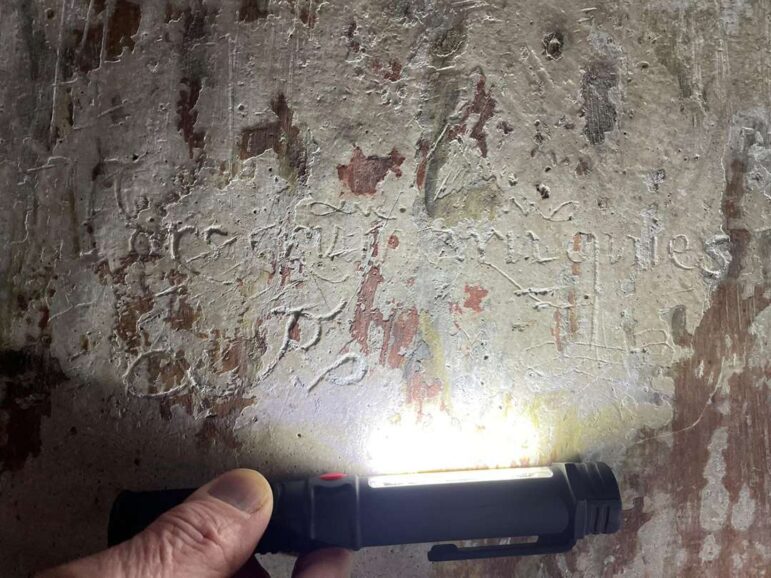SHEFFIELD, U.K. – Witch marks, symbols carved into stone or wood to protect households from negative magic, are found throughout the UK, dating mainly from the Medieval period onwards. We have previously reported on discoveries of hexafoils, ancient symbols originating in the Bronze Age and the most common magical markings in eastern England, often found in farmhouses, churches, and pubs. Typically carved onto beams or walls, these marks are frequently located near entrances or openings, such as doors and fireplaces, but they are also seen in stained glass windows.

Gainsborough Old Hall [Photo Credit: English Heritage]
This autumn, an extensive array of witch marks was discovered at Gainsborough Old Hall in Lincolnshire, dating from Tudor times. English Heritage has mapped around 20 apotropaic (ritual protection) marks, primarily hexafoils and Marian marks—overlapping ‘V’s symbolizing appeals to the Virgin Mary for protection against evil spirits and demons. These marks are concentrated in the servants’ quarters.

Overlapping witch marks found at at Gainsborough Old Hall in Lincolnshire, once visited by Henry VIII and his then Queen, Catherine Howard. [Photo Credit: English Heritage]
The hall itself was built by Sir Thomas Burgh II in the late 15th century. It served as the family seat until the late 1500s when it was purchased by the Hickman family, who lived there until the early 1700s. William Hickman, a member of this family, was notoriously unpopular for imposing tolls, opening the Gainsborough market to London traders, and enclosing common land. Several of the discovered marks include his name, inscribed upside down—a traditional form of cursing.
Kevin Booth, Head of Collections at English Heritage, remarked: “It is astonishing that centuries on, the amazing old buildings in our care still have secrets waiting to be discovered. The Old Hall has undoubtedly had a tumultuous past, particularly under the ownership of the apparently unpopular William Hickman. However, the reason behind the exceptionally high concentration of protective carvings here remains a mystery.”

One of the witch marks is still in need of deciphering [Photo Credit: English Heritage]
The British Pagan community is very familiar with such marks, and we reached out for comments:
“We have a couple of ‘daisy wheels’ locally, and our church porch features apotropaic marks. For sheer quantity, the tithe barn at Bradford on Avon is hard to beat!” said Stuart Inman, an artist.
“I studied them in the New Forest and recorded a huge number, though I think I only scratched the surface (no pun intended). St. Mary’s in Fordingbridge is incredible, with pentagrams and demons dated to the medieval period. There are also lots of daisy wheels and other marks. Many would have been in color before the Reformation. These findings, recorded in my New Forest Folklore book, include examples from pubs, churches, private homes, fireplaces, and window mullions or door frames. We also have tree glyphs here, though most are much more modern,” shared Vicki Bramshaw, author and historian.
“I’ve worked as a heritage consultant in numerous stately homes and other locations in England, and witch marks of various types are quite common,” said Julian Vayne, author. “The magical logic seems to be that by placing the marks on thresholds—hearths, windows, doorways—the witch would become fascinated or tangled in the design, preventing evil magic from entering. I’ve encountered three main types: cross-hatched marks, hexfoils or daisy wheels (both suggesting a net or protective charm), and ‘tadpole’ burn marks, possibly related to protection from fire. Violet Pritchard’s 1967 book, English Medieval Graffiti, was instrumental in raising awareness of these marks.”
Every October, alongside pumpkins, skeletons, and ghosts, stories about witch marks surface, often tied to recent discoveries. This year, it was English Heritage’s Gainsborough Old Hall featured in The Guardian with what was described as a “staggering array” of such marks. While these discoveries are significant, the terminology often used in reports can be misleading, sparking frustration among researchers in the field.
The preferred term is apotropaic marks, used to describe these symbols as protective measures against the array of evil influences believed to impact daily life in medieval and early modern times. Found in both secular and religious contexts, and across high- and low-status buildings, marks such as the daisy wheel or hexafoil were often inscribed to attract good luck as well as to ward off evil. Burn marks, previously dismissed as accidental, have been shown through experimental archaeology to be intentional, created by carefully burning and scraping surfaces repeatedly with narrow tapers. While no written sources explain the practice, it has been theorized as a form of “inoculation” against fire, a constant threat in timber buildings. (Linda Wilson, writer and historian, Raking Light)
The Wild Hunt is not responsible for links to external content.
To join a conversation on this post:
Visit our The Wild Hunt subreddit! Point your favorite browser to https://www.reddit.com/r/The_Wild_Hunt_News/, then click “JOIN”. Make sure to click the bell, too, to be notified of new articles posted to our subreddit.